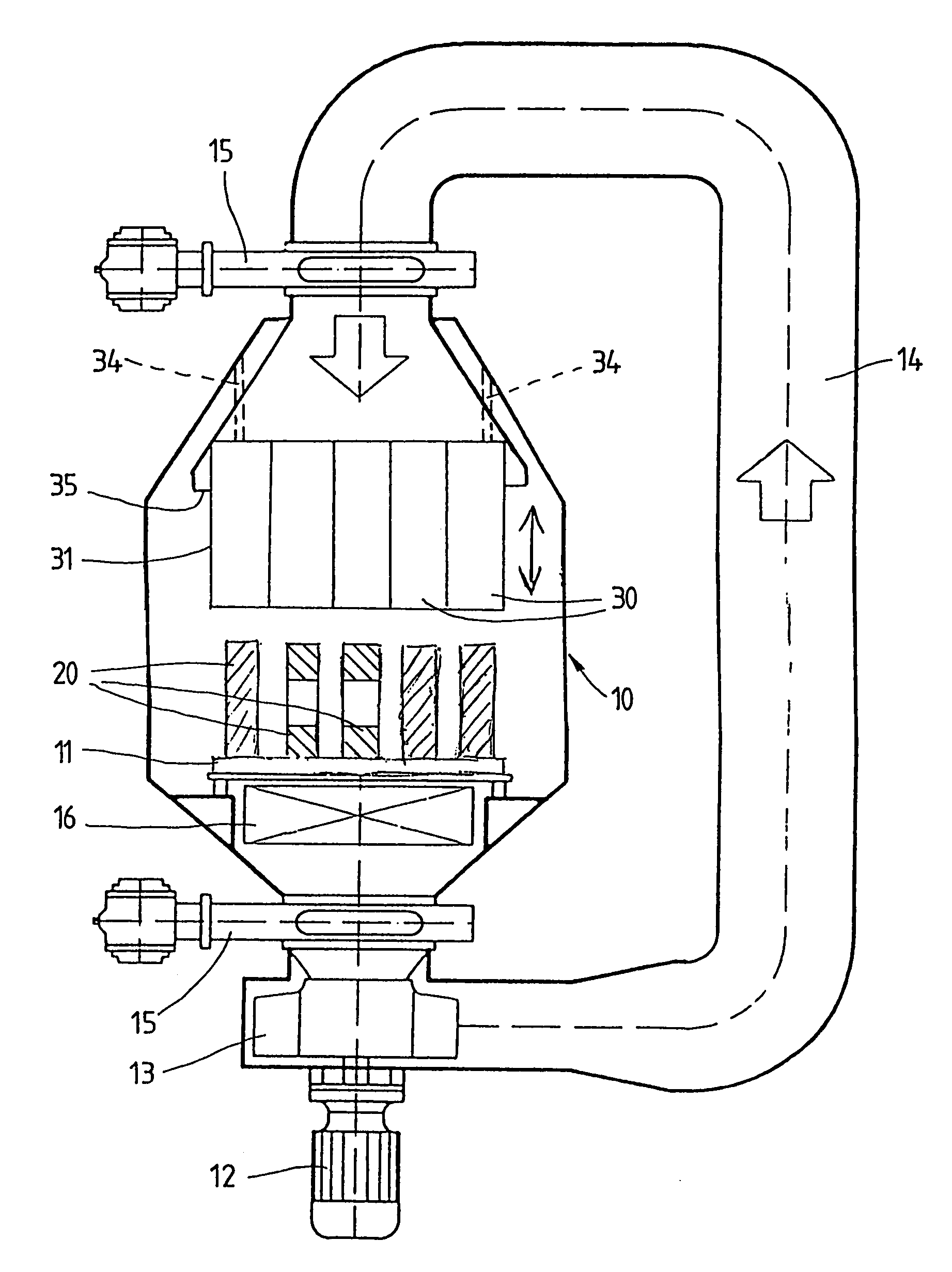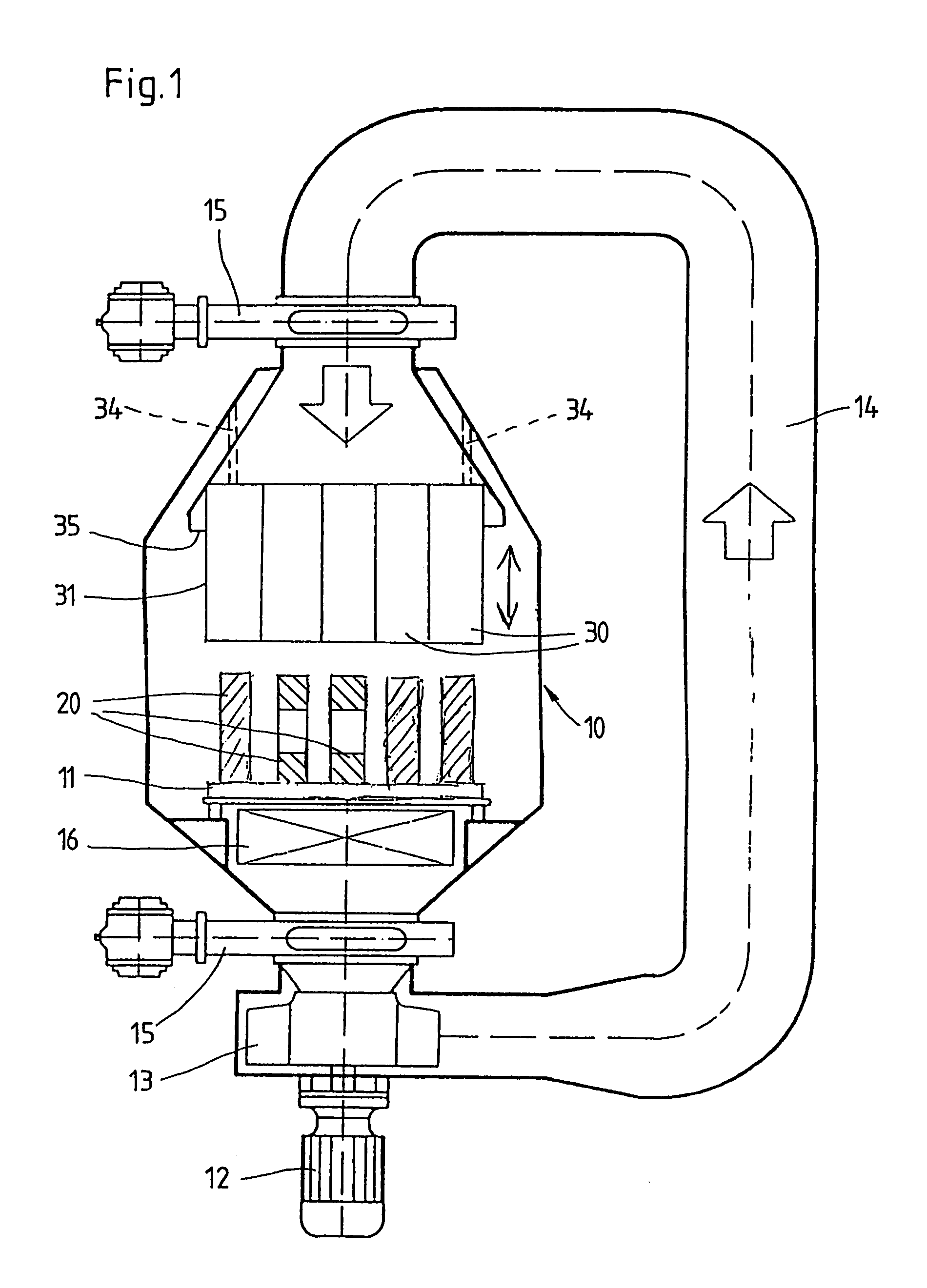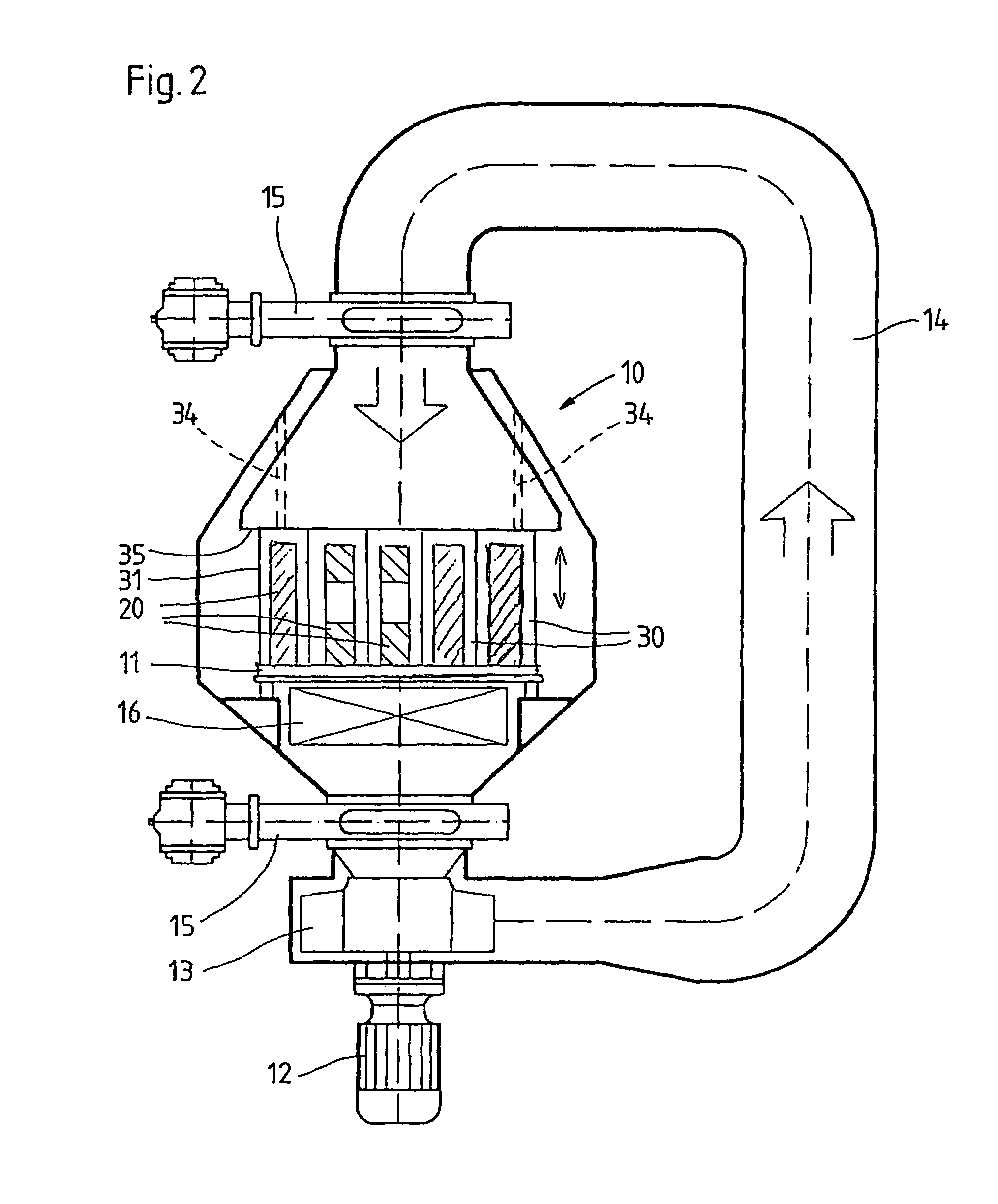Method and apparatus for treatment of metallic workpieces
a technology for thermal treatment and workpieces, applied in lighting and heating apparatus, discharged material handling, furnace components, etc., can solve the problems of unsatisfactory economics, infrequent rejection of a number of rejects, and gas flow striking the workpiece in a diffuse and turbulent manner, and achieves high gas speed, intensive quenching, and cost-effective production.
- Summary
- Abstract
- Description
- Claims
- Application Information
AI Technical Summary
Benefits of technology
Problems solved by technology
Method used
Image
Examples
Embodiment Construction
[0023]The quenching chamber 10 illustrated in FIGS. 1 and 2 is part of an apparatus for the thermal treatment of metallic workpieces 20 and is arranged, for example, at the end of a roller hearth-type furnace. The quenching chamber 10 can be embodied such that it can be operated either with a vacuum or at atmospheric pressure or at overpressure. Located in the quenching chamber 10 is a grate or grid 11 carrying workpieces 20 that have been heated and are to be cooled; the grate makes it possible for a quenching gas to circulate vertically in the quenching chamber 10. For circulating the quenching gas, a fan 13 driven by a motor 12 is arranged below the grate 11. Outside of the quenching chamber 10, the quenching gas is conducted through a gas channel 14 in the direction of flow indicated by the arrow in FIGS. 1 and 2. Furthermore provided above and below the quenching chamber 10 are flaps or the like 15 that prevent the quenching gas from circulating until the fan 13 has achieved th...
PUM
| Property | Measurement | Unit |
|---|---|---|
| Length | aaaaa | aaaaa |
| Flow rate | aaaaa | aaaaa |
| Diameter | aaaaa | aaaaa |
Abstract
Description
Claims
Application Information
 Login to View More
Login to View More - Generate Ideas
- Intellectual Property
- Life Sciences
- Materials
- Tech Scout
- Unparalleled Data Quality
- Higher Quality Content
- 60% Fewer Hallucinations
Browse by: Latest US Patents, China's latest patents, Technical Efficacy Thesaurus, Application Domain, Technology Topic, Popular Technical Reports.
© 2025 PatSnap. All rights reserved.Legal|Privacy policy|Modern Slavery Act Transparency Statement|Sitemap|About US| Contact US: help@patsnap.com



